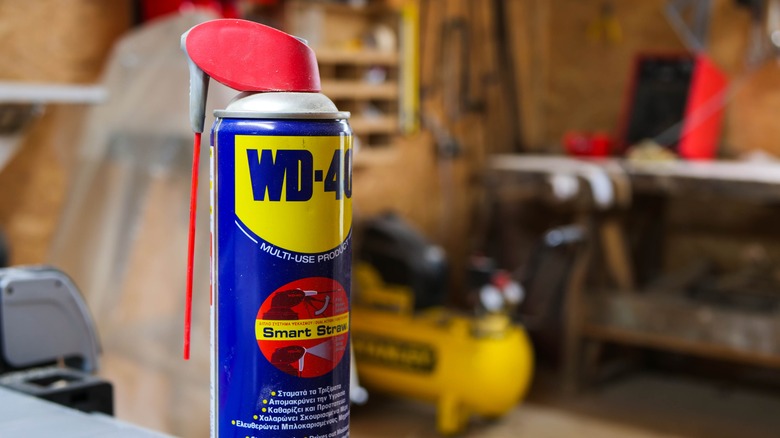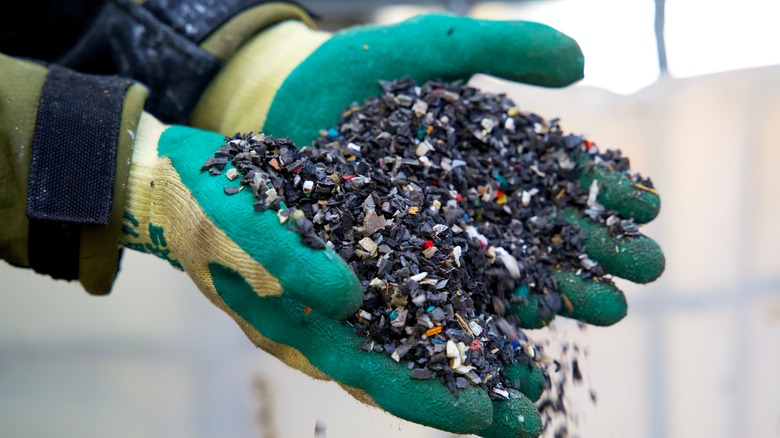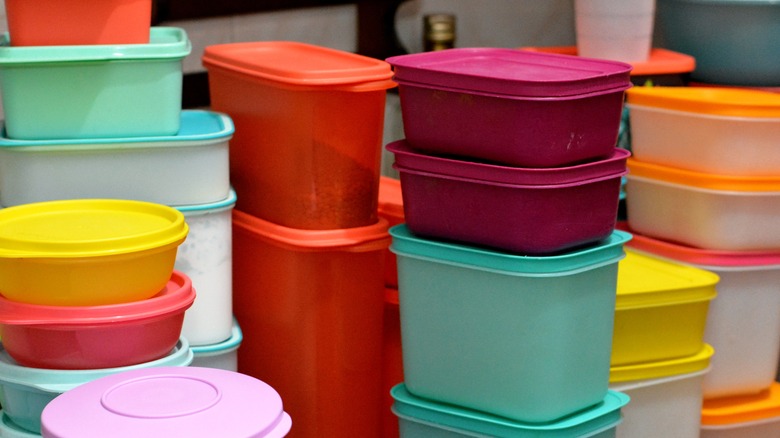Why You Should Never Use WD-40 On Plastic
Plastics of various compositions are ubiquitous in our modern lives. From the various appliances and dishware in your kitchen to certain components of your car, you're pretty much guaranteed to find a little bit of plastic just about anywhere. Since plastic is artificial, it's generally more resistant to weathering, as opposed to something like metal, which can rust. However, on occasion, plastic can experience its own problems with sticking and greasiness.
In these situations, what's the first solution you usually think of? When it comes to degreasing and lubricating, you would probably leap to that classic jack-of-all-home-trades, WD-40. However, in yet another difference from metal, plastic and WD-40 definitely do not get along. In fact, if at all possible, you should refrain from using WD-40 on your plastics altogether. So, why exactly is using WD-40 to lubricate plastic things such a bad idea, and what happens if you do it anyway?
WD-40's effect on plastic
Given its solid structure, it's very easy to forget that plastic is an oil-based material. Gasses like propane undergo a special heating treatment and are then combined to create various plastic polymers. That's why some cheap plastic products can sometimes have a bit of an oily sheen to them.
WD-40, by its nature, is designed to remove oil, grease, and other watery substances from solid surfaces. The key to this nature is the hydrocarbons present in its chemical formula. It's the same stuff you'd find in chemical solvents.
Here's where the problem arises – hydrocarbons can't mix with plastic polymers. If one is introduced to the other, then the chemical bonds of the polymer start breaking down. In layman's terms, if you spray a plastic object with WD-40 and leave it for a while, the object will start softening and breaking down, until it eventually becomes so brittle that it snaps.
Is WD-40 dangerous to use on all plastics?
If you can help it, you should refrain from using WD-40 on any and all plastics for the sake of safety. That said, if you want to get technical about it, there are certain subsets of plastic polymers that won't be damaged by WD-40. The key difference is in the polymer's usage.
Amorphous polymers like polycarbonate, polystyrenes, and PVC are the kind that are vulnerable to WD-40-based erosion. These are the kinds of plastics you'd find in things like plastic cutlery, baby bottles, optical discs, and LCD screens. If you spray these things with WD-40, they're going to break down.
On the other hand, crystalline plastics are more resistant to erosion caused by WD-40. These include things like polypropylene, polyethylene, polyester, and nylon. This stuff is used in the creation of tougher plastic objects like laboratory-grade chairs or dishwasher-safe Tupperware.
Of course, unless you can somehow differentiate plastic polymers at a glance, it's tough to know which plastics are made of what, so again, just try not to use WD-40 on anything plastic to be safe.


